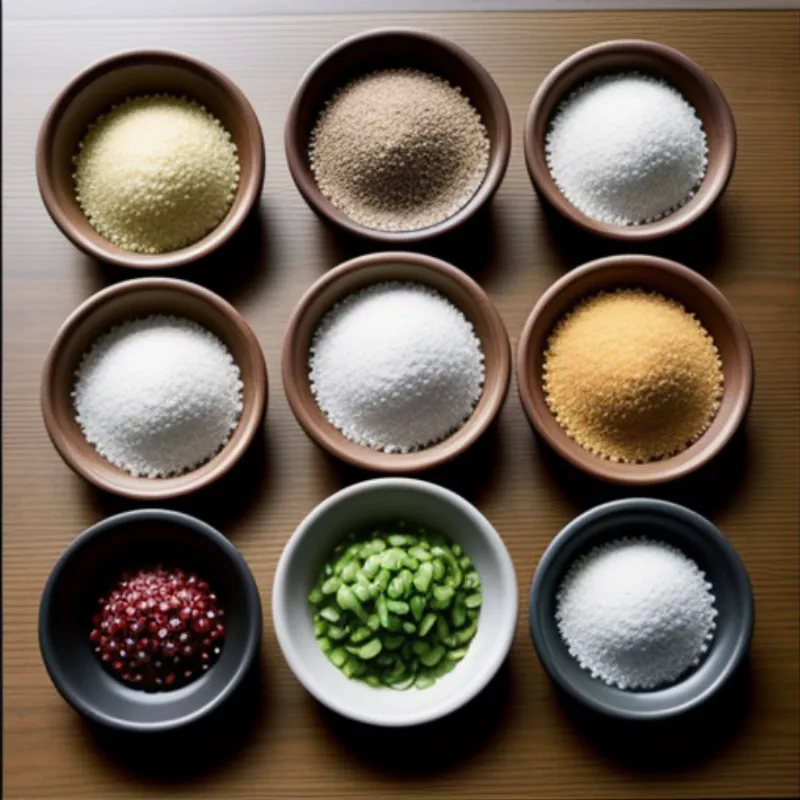Nasi Lemak – the very name evokes the vibrant streets of Malaysia, filled with the aroma of coconut rice and a fiery sambal that tantalizes the taste buds. This isn’t just any condiment; it’s the heart and soul of Malaysia’s national dish, adding a spicy kick that elevates Nasi Lemak from simple to sensational. Today, we unlock the secrets of this iconic sambal, guiding you to recreate the magic right in your own kitchen.
Unlocking the Fiery Flavors of Nasi Lemak Sambal
This sambal isn’t just hot; it’s a symphony of flavors, balancing the heat of chilies with the tang of tamarind and the savory depth of shallots. It’s the perfect companion to the creamy coconut rice, the crunchy peanuts, and the crispy anchovies that make up a complete Nasi Lemak experience.
Crafting Your Own Nasi Lemak Sambal: A Step-by-Step Guide
Ready to embark on this culinary adventure? Let’s gather our ingredients and get started!
Ingredients: The Building Blocks of Flavor
Essential Ingredients
- Dried chilies: 10-15 pieces (adjust to your spice preference). For an authentic Malaysian flavor, seek out dried chilies labeled “cili kering” at Asian grocery stores.
- Shallots: 5-6 medium-sized, roughly chopped.
- Garlic: 3-4 cloves, roughly chopped.
- Tamarind pulp: A lime-sized ball, soaked in warm water for 15 minutes and strained (about 1/4 cup of tamarind juice).
- Oil: 3-4 tablespoons (vegetable or coconut oil works well).
- Salt: To taste.
- Sugar: 1 teaspoon (adjust to your liking).
Optional Ingredients for an Extra Zing
- Lemongrass: A 2-inch stalk, bruised.
- Galangal: A 1-inch piece, bruised.
- Shrimp paste (belacan): 1/2 teaspoon (this adds a pungent, umami flavor that’s characteristic of Malaysian cuisine).
 Nasi Lemak Sambal Ingredients
Nasi Lemak Sambal Ingredients
Equipment: Your Culinary Arsenal
- Blender or food processor: For a smooth sambal.
- Small pot: For cooking the sambal.
- Mortar and pestle: Optional, for a coarser, more rustic sambal.
The Art of Making Nasi Lemak Sambal
- Preparing the Chilies: Remove the stems and seeds from the dried chilies. Soak them in hot water for about 20 minutes to soften.
- Blending the Sambal: Drain the chilies and add them to your blender or food processor along with the shallots, garlic, and optional lemongrass and galangal. If using shrimp paste, add it now. Blend until you achieve a coarse paste.
- Cooking the Sambal: Heat the oil in a small pot over medium heat. Add the blended sambal mixture and cook, stirring frequently, for about 8-10 minutes, or until the sambal darkens in color and becomes fragrant.
- Balancing the Flavors: Stir in the tamarind juice, salt, and sugar. Continue to cook for another 2-3 minutes, allowing the flavors to meld. Taste and adjust the seasonings as needed. Remember, the sambal should be a harmonious balance of spicy, tangy, and savory.
Tips from a Sambal Connoisseur
- Spice Level: The number of chilies can be adjusted to your preference. For a milder sambal, remove the seeds from the chilies before soaking.
- Shrimp Paste Power: A little goes a long way! Shrimp paste adds a pungent depth of flavor, but too much can be overpowering.
- Tamarind Tang: Adjust the amount of tamarind juice to your liking. Some prefer a more pronounced sourness, while others prefer a milder tang.
- Texture Talk: For a smoother sambal, blend the ingredients for longer. If you prefer a coarser texture, use a mortar and pestle or pulse the ingredients in the blender.
Serving and Storage: Keeping the Sambal at its Best
Nasi Lemak Sambal is best served at room temperature alongside your Nasi Lemak. Store any leftover sambal in an airtight container in the refrigerator for up to 1 week.
Nasi Lemak Sambal: Your Questions Answered
Q: Can I use fresh chilies instead of dried chilies?
A: While you can use fresh chilies, dried chilies provide a deeper, more concentrated flavor that’s characteristic of Nasi Lemak Sambal. If using fresh chilies, you may need to use a larger quantity to achieve the desired level of heat.
Q: I don’t have tamarind pulp. What can I substitute?
A: Lime juice or vinegar can be used as a substitute for tamarind pulp, although it will slightly alter the flavor profile. Use 1-2 tablespoons of lime juice or vinegar and adjust to taste.
More Than Just a Condiment: The Versatility of Nasi Lemak Sambal
While traditionally paired with Nasi Lemak, this sambal is incredibly versatile. Use it as a fiery condiment for noodles, rice dishes, grilled meats, seafood, or even as a spicy spread for sandwiches.
 Nasi Lemak Sambal Serving Suggestions
Nasi Lemak Sambal Serving Suggestions
A Taste of Malaysian Heritage, Made by You
Making your own Nasi Lemak Sambal isn’t just about following a recipe; it’s about connecting with the heart of Malaysian cuisine. It’s about the sizzle of the chilies in oil, the intoxicating aroma that fills your kitchen, and the satisfaction of creating something truly special with your own hands. So gather your ingredients, awaken your inner chef, and experience the magic of Nasi Lemak Sambal.
Want to explore more flavors of Southeast Asia? Discover how to make Sambal Ikan Cakalang for a taste of Indonesian cuisine!
